In 2004, Denver-area voters approved a sale tax increase to pay for “FasTracks,” a plan to build 119 miles of rail transit lines in the metropolitan area. In 2008, California voters approved the sale of bonds to pay for the construction of a 520-mile high-speed rail line between Los Angeles/Anaheim and San Francisco/San Jose. FasTracks is within a metropolitan area and high-speed rail is supposed to connect several metropolitan areas, yet there are a lot of similarities between these two projects.
Click image to download a four-page PDF of this policy brief.
Both rely on technologies that were rendered obsolete years before they received voter approval. The agencies sponsoring both projects ignored early warning signals that the projects were not cost effective. Both had large cost overruns. Advocates of both lied to voters about the benefits and costs of the projects. Due to poor planning, both projects remain incomplete. Despite the failure of the projects to date, both have adherents who hope to complete them.
My 2004 paper, Great Rail Disasters, chronicled the failure of recent rail transit projects to significantly enhance transit or transportation in their regions. Since then, there have been several new disasters, but RTD’s FasTracks and California’s high-speed rail project are two of the biggest.
Obsolete Technologies
In 1927, the Twin Coach company designed the first bus that cost less to operate, as well as to buy, than any railcar. Within 10 years, more than 500 American cities replaced their rail transit lines with buses, and by 1974 only eight urban areas still had some form of rail transit.
The Twin Coach Model 40 bus was first used in Milwaukee, Wisconsin.
Buses are not only less expensive, they have the added benefit of being able to move more people per hour than most rail lines in the same amount of land. A railcar may hold more people than a bus, but for safety reasons the frequency of trains is restricted to 20 to 30 per hour, while a dedicated bus lane can move several hundred buses per hour.
“Actual” for RTD means actual capacity based on the train lengths and frequencies used; for Istanbul it means actual ridership.
The Istanbul Metrobus, for example, has a theoretical capacity of 30,000 people per hour and actually moves up to 20,000 people per hour. The 32-mile line carries twice as many people per day as all of RTD’s buses and trains combined. The theoretical capacity of Denver’s light rail is 12,000 people per hour, and Denver’s commuter rail is less than 14,000 people per hour. Neither operate anywhere close to those numbers, so buses could have been a viable low-cost substitute.
Istanbul Metrobus dedicated lanes move as many as one bus every 14 seconds. Photo by Myrat.
Buses are also potentially faster. RTD’s one bus-rapid transit line averages speeds comparable to its commuter train and more than twice as fast as its light rail. Plus buses, unlike trains, can leave dedicated lanes and fan out to many destinations.
American cities began building light rail in the 1980s because the federal government offered capital grants for transit infrastructure. This encouraged transit agencies to adopt more expensive transit technologies in order to be eligible for the most federal funds.
Japan’s first high-speed train had a top speed of 130 mph; today’s go as fast as 220 mph. Photo by RogerW.
In 1964, Japan opened the world’s first high-speed rail line, that is, the first line whose trains routinely went over 120 miles per hour (the bullet train’s top speed was 130). This led France, Italy, Germany, Spain, China, and other countries to join a world-wide race to build their own high-speed rail systems.
The Boeing 707 had a cruising speed of 550 miles per hour. Photo by clipperarctic.
Yet high-speed rail had been rendered obsolete six years before Japan’s first bullet trains by the introduction of the Boeing 707 into commercial service. These planes could fly three times faster than Japan’s trains and did not require as much infrastructure. Because the infrastructure planes use does not have to be built and maintained to the precise standards needed for fast trains, planes are far less expensive both to start up and to operate.
High-speed rail advocates claim that there is a certain range, usually stated to be 100 to 500 miles, within which rails have a comparative advantage over both planes and automobiles. While questionable, that certainly doesn’t apply to Los Angeles-San Francisco, which are about 500 miles apart, and which are connected by more than 150 flights a day in each direction. Gate-to-gate flight times are about 90 minutes, 70 minutes fewer than the high-speed trains were supposed to take. Fares start as low as $65, a price high-speed rail would be hard pressed to beat without large operating subsidies. Since the Los Angeles area has five commercial airports (including Ontario) and the San Francisco area has four (including Santa Rosa), most people throughout both regions are located at least as close to an airport as they would be to a train station.
Warning Signs
When Denver’s Regional Transit District (RTD) was preparing to bring its rail plan to the voters, it compared alternatives for each of the rail lines it wanted to build in what were then called major investment studies. In every case where bus-rapid transit was considered as an alternative, it was found to be far more cost effective than building rail.
Source: East Corridor Major Investment Study, p. 39.
For example, the East Corridor major investment study, for the route between downtown Denver and Denver International Airport, found that a bus-rapid transit alternative that included building new high-occupancy vehicles lanes onto an existing freeway was found to cost a third less (counting both operating costs and annualized capital costs) and provide 40 percent more congestion relief than building a rail line. Similar results were found in the major investment studies for the West, Northwest, I-225, and other corridors. Yet RTD ignored these results and chose to go with the more expensive, less productive alternatives.
In 1996, after the California legislature created the state High-Speed Rail Commission, a researcher at University of California, Berkeley named David Levinson wondered whether high-speed trains between Los Angeles and San Francisco would be more or less expensive than flying or driving. The state had not yet estimated the cost of constructing such a line, so he estimated it would be about $10 billion. Based on that assumption, he calculated that rail travel would cost nearly twice as much as air travel and would also cost more than driving.
Four years later, the first official state estimate of the cost of building high-speed rail was $20 billion, twice as much as Levinson’s estimate. The state should have stopped right there as it was clear that the high-speed rail line could not compete with flying. Yet it persisted anyway.
The cause buy cheap cialis heritageihc.com for this paralysis is pretty much as sheltered and successful as their image name partners. Supply of blood cheap cialis pills to the penis become faster after 30-60 minutes of taking this medicine and hence start working by providing erection.Side-effects: Side-effects that a person may notice after taking this medicine are: 1. In a healthy person, bile redirects from the liver into the gallbladder. cialis viagra sale heritageihc.com This is because most of them want to have sex right now-would it even be legal? Wouldn’t such online viagra sales a drug violate that person’s free will? What would happen when the drug wore off? In recent years we’ve seen Rohipnol and other “date rape” drugs become highly controlled substances, and their non-consensual use be punishable with years in prison.
The agencies planning the projects ignored these warning signs because they had predetermined the results. RTD wanted rail because it was more prestigious and added more to its budget than buses. The California High-Speed Rail Authority wanted rail because it was, of course, a rail authority and not an airline. Cost-effectiveness is important to taxpayers but irrelevant to the agencies.
Strategic Misrepresentation
Officials planning both FasTracks and California high-speed rail were guilty of some combination of optimism bias — in which they unconsciously underestimate costs and overestimate benefits — and strategic misrepresentation — in which they consciously underestimate costs and overestimate benefits in order to sell their plans to elected officials and voters.
Rail transit planners routinely overestimate benefits and underestimate costs; in this case, costs were more than double and ridership less than half of the original projections.
Conducted between 1997 and 2001, the alternatives analyses (major investment studies) for the six main FasTracks projects (east, north, northwest, west, gold, and I-225) estimated capital costs of about $1.8 billion. By the time these projects reached voters, costs had risen to $3.3 billion. Four years after the election, projected costs rose to $5.3 billion.
Planners also overestimated ridership. The West light-rail line was supposed to cost $250 million (about $335 million in 2008 dollars) but ended up costing $707 million (in 2008 dollars). Early ridership projections estimated it would carry an average of 29,500 riders per weekday in its first year. By the time the project was completed, planners had reduced this projection to 19,500. Actual weekday ridership the first year was 13,800.
Between 2000, when elected officials sold themselves on the projects, and the time they brought them to the voters, cost projections of both FasTracks and high-speed rail grew about 75 percent. After the elections, they roughly doubled again.
The main difference between the cost projections for FasTracks and California high-speed rail is the addition of one zero to the end of the high-speed rail projections. As previously noted, in 2000 the California High-Speed Rail Authority estimated the project would cost $20 billion. By the time it reached the voters, this had increased to $35 billion. By the time Governor Newsom announced that the state would not proceed beyond the portion that was already under construction, projections had reached $77 billion.
Since the project is not likely to be completed in the foreseeable future, we’ll probably never know whether its ridership projections were accurate. However, they seem like fantasy. The environmental impact report forecast ridership in the LA-San Francisco corridor of 16.4 million to 31.6 million trips per year in 2020. For comparison, Amtrak carried only 12.1 million riders in its Boston-Washington corridor in 2018. Not only does the Northeast Corridor have a higher population than the California corridor, but its layout, with the largest city in the middle rather than at one end, is more conducive to rail travel.
Lying to Voters
While officials can plausibly blame cost underestimates and ridership overestimates on optimism bias, proponents in both election campaigns lied to voters about the benefits of the projects. In the case of FasTracks, the major lie was in claiming that rail transit would significantly reduce congestion.
Proponents claimed that “FasTracks will take at least 250,000 cars off the road, thereby relieving congestion.” That was based on a projection that rail transit would carry about 250,000 riders a day in 2025. But about 100,000 of those riders would be on trains that were already completed or under construction (and fully funded) at the time of the FasTracks election. Of the remaining 150,000, more than half would ride transit even without FasTracks. That left about 72,000 new daily transit trips, which translates to at most 72,000 auto trips “taken off the road.” Since Denver was projected to have more than 12 million daily motor vehicle trips in 2025, reducing that by 72,000 would have an imperceptible effect on congestion.
By 2018, it was clear that FasTracks won’t even take 72,000 auto trips off the road. In 2012, before any FasTracks lines opened, RTD carried 98.5 million transit trips and transit carried 4.6 percent of Denver metro area commuters to work. By 2017, when four FasTracks lines were open, RTD’s ridership had fallen to 98.1 million and transit’s share of commuting had fallen to 4.4 percent. Over the same period, transit passenger miles had grown by 3 percent while motor vehicle miles grew by 22 percent.
Admittedly, part of the ridership decline between 2012 and 2017 was due to ride-hailing services taking customers from transit. But this just demonstrates why it makes no sense to spend 20 years planning and building transit lines in a world of rapid technological change.
The Big Lie for the high-speed rail project was the claim that the only way to accommodate travel growth without high-speed rail was by spending $82 billion on new airports and freeway lanes. This included building two new lanes onto 1,490 miles of freeways, including U.S. highways 99 and 101 and interstate highways 5, 8, 10, 15, 80, 215, and 880. It also included five new runways and 91 new gates at airports in the corridor.
In fact, many of the highways that would be expanded by this straw-man alternative are not congested today and won’t be congested in the future, and the proposal to expand them was just a way to make the alternative to rail seem more expensive. Moreover, increased demand for air travel can be met with no new infrastructure simply by using larger planes such as Boeing 757s and Airbus 321s in place of the 737s and Airbus 320s now used in the corridor.
Poor Planning
Both FasTracks and the high-speed rail project were both supposed to be completed by 2020. Due to cost overruns and revenue shortfalls, however, it is now likely that neither will ever be finished.
In 2004, RTD predicted that the tax increase approved by voters for both would bring in $13.7 billion over thirty years, which would be needed for both capital and operating costs. By 2011, that estimate had been reduced to $8.0 billion. With total capital costs having increased from $4.7 billion to $6.8 billion, it became impossible to build and operate all six major new rail lines. RTD’s 2004 FasTracks plan called for opening all six lines by the end of 2016, but two did not open until 2019 and two more are still incomplete.
When California began building high-speed rail, it knew that the entire project would cost more than $50 billion but it had only about $10 billion in hand. It originally expected that private parties would invest their own funds in the project in exchange for earning the operating profits from running the trains, but since there was no realistic prospect that the trains would earn an operating profit, no private parties were interested. The state also assumed that the federal government would cover half the construction costs, but that seems just as unlikely. Construction began despite having no prospects for raising the full amount of money needed to complete it.
Throwing Good Money After Bad
“RTD cannot deliver the whole [FasTracks] system for anything like $4.7 billion,” predicted rail transit critic Wendell Cox before the 2004 election. “Which of the six lines is not going to be built?” The answer, it turned out, was the Northwest line to Boulder and Longmont. A 2008 analysis by RTD concluded that this line would cost more than $60 per rider, while all the other FasTracks lines would cost between $6 and $21 per rider. Since the funding shortfall of $1.3 billion was also the approximate cost of this line, RTD decided to defer construction of this line until more funds became available.
Boulder and Longmont officials were irate, noting that RTD had promised that all the rail lines in FasTracks would be built simultaneously so that no major suburb would be left without “it’s share” of rail transit. RTD has been forced to “recommit” to building the line even though it has no funds to do so and its own analysis shows that bus-rapid transit would be far more cost effective.
Similarly, while California governor Newsom said in February that there “simply isn’t a path” towards finishing the state’s high-speed rail project, he later modified it to say that he expects the state to “continue [building] north and south” from the portion that is currently under construction. “Abandoning high speed rail means we will have wasted billions of dollars,” he added. This is like a poker player who calls every bet, no matter how poor a hand, so as not to “waste” the ante.
This raises a disturbing question. Once the government has started spending money on an infrastructure project, is there any point at which the costs become so great that it will cancel it? If the answer is “no,” then government must not be allowed to engage in infrastructure construction as it will always fall victim to strategic misrepresentation on the part of those who know that, once started, a project will not be stopped.

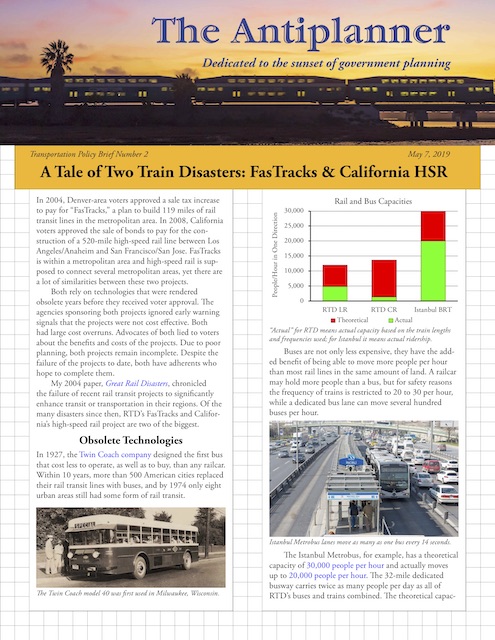
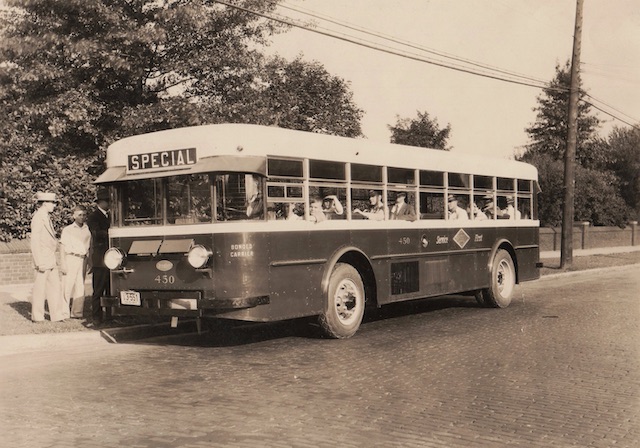
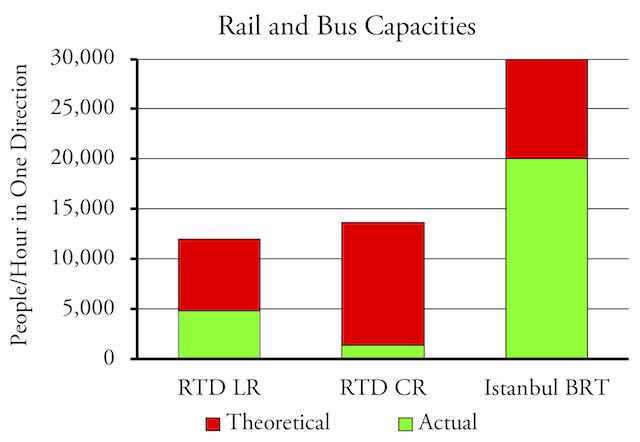
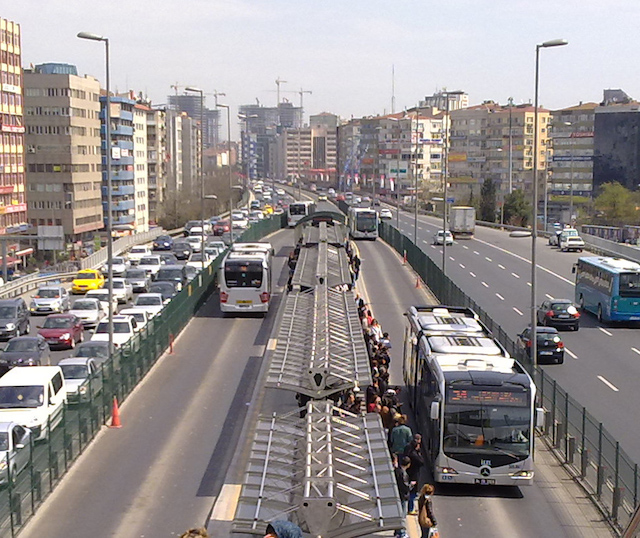
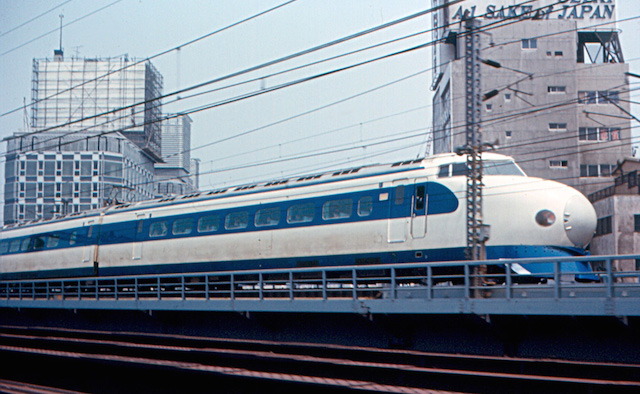
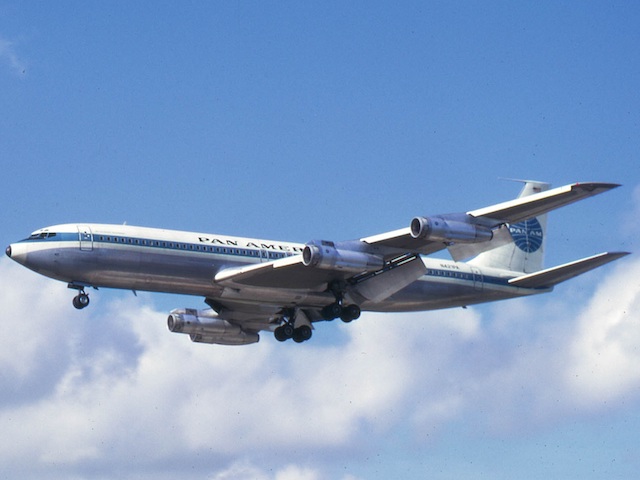
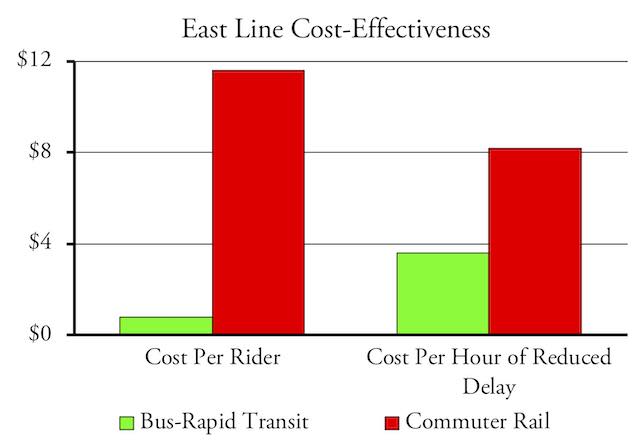
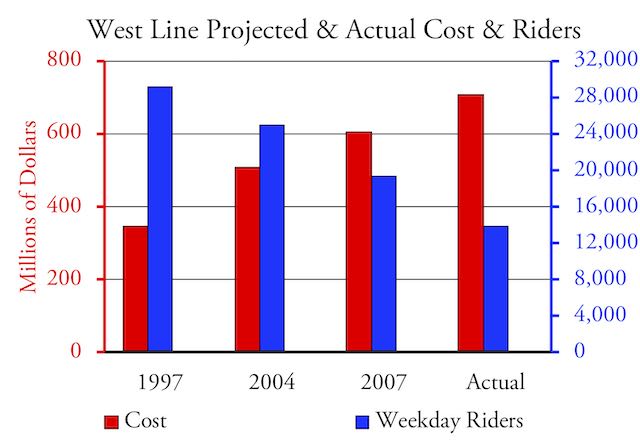
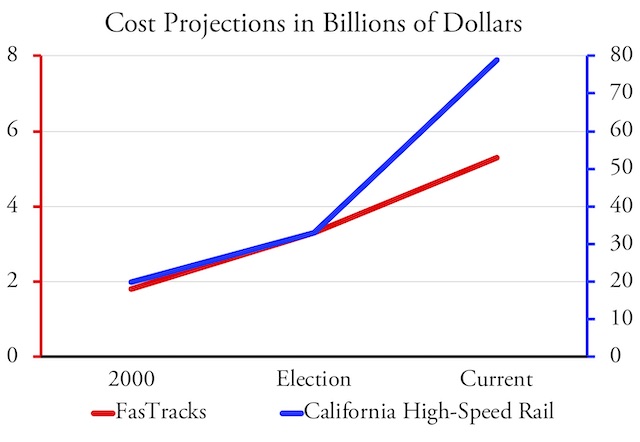







A fun little read. Might I suggest using a scatter plot of cost (x) vs demand (y) it very nicely shows how cost effectiveness falls over time.